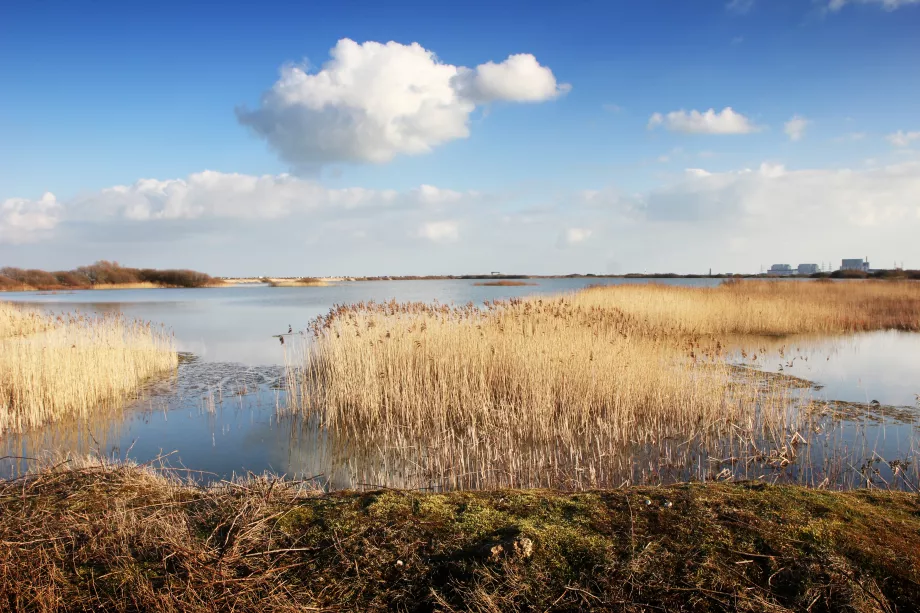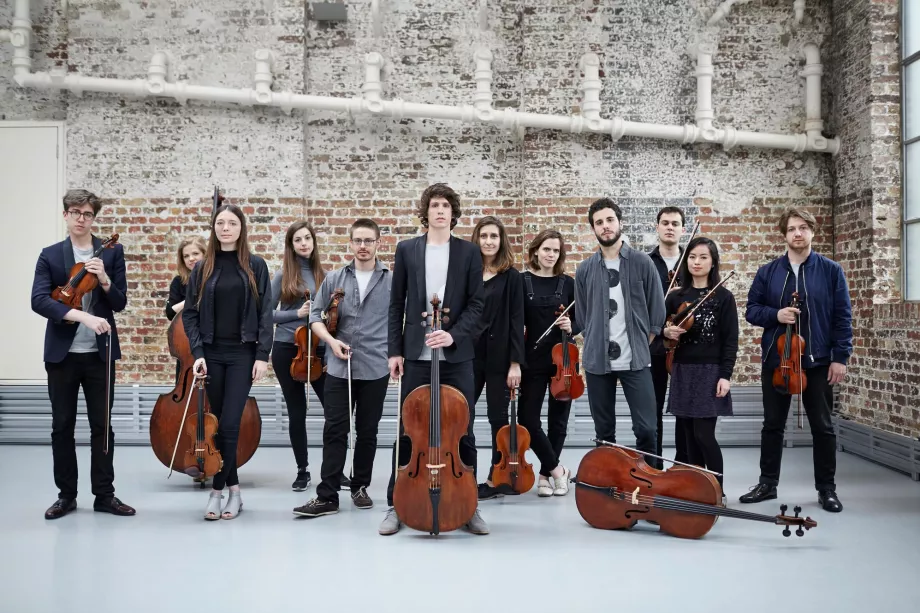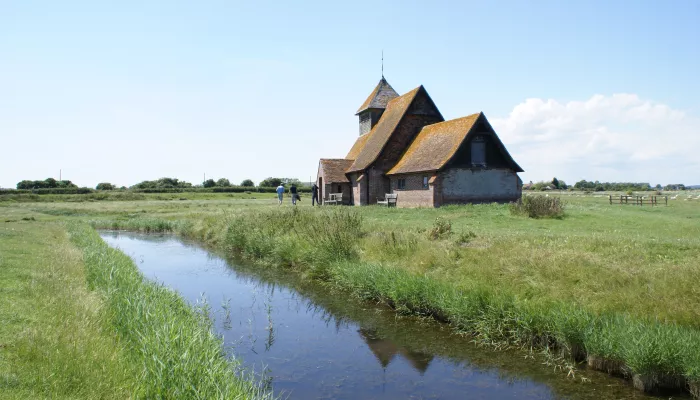
Romney Marsh is home to some of the UK’s rarest and most unusual species. The new artworks have been designed to highlight what a special place this is. It’s here that the short-haired bumblebee was first reintroduced after being declared extinct in the UK. Caterpillars of the rare marsh mallow moth feed undisturbed and medicinal leeches can be found in the marsh pools - another local conservation success story. In spring, Europe’s largest and noisiest amphibian, the Marsh Frog, can be heard 'laughing' along the many waterways.
On first impressions, the flat and isolated landscape of Romney Marsh, which mainly lies below sea level, may seem bleak and uninviting. In fact, Romney Marsh is rich with wildlife and unique heritage. As famously noted in The Ingoldsby Legends (1840), “The world, according to the best geographers, is divided into Europe, Asia, Africa, America and Romney Marsh”.
Fourteen ancient medieval churches punctuate the landscape, each one highly distinctive in its architecture and history. Following the initial unveiling event, 10 of these historic churches will host beautiful new mosaics which have been created in partnership with artists from Teach Me creative studios in New Romney and the local community. Local organisations involved include 10 Parochial Church Councils, three local primary schools, local scouts and cubs groups and MIND, as well as members of the general public. Over 300 people have contributed to the project.
Romney Marsh is not just famous for wildlife. Renowned war artist Paul Nash painted the mighty sea wall at Dymchurch in many of his works. Nearby, Edith Nesbit is buried, author of The Railway Children, who lived close to the Marsh’s famous miniature steam railway.
The Marsh’s flat landscape, which juts out into the English Channel, was once the perfect location from which to launch aircraft to support the D-Day landings and, at its tip, the vast shingle expanse of Dungeness is often referred to as “Europe’s only desert”. It’s here, perched awkwardly between a nuclear power plant and the wreckage of old ships, that Derek Jarman’s beloved Prospect Cottage can be found: a modern-day symbol of the area’s influence on artists and creatives, who are now flocking to the Kent coast.

Dungerness ©️ Jim Higham
Didier Rochard, Cultural Heritage Officer of The Fifth Continent Landscape Partnership at Kent Wildlife Trust, said:
“We are thrilled that this project has been so successful at connecting local people with the heritage and wildlife of this incredible landscape, and particularly during such a challenging time. We could not do this without the support of the National Lottery Heritage Fund, Arts Council England and The Lochlands Trust; they have helped to fund a very special project for this geographically-isolated rural community. It’s right that Romney Marsh is recognised not only as one of the country’s most striking and unusual landscapes, but also for its importance to the UK’s cultural landscape and history. Romney Marsh has so much to offer; and the new mosaics help highlight some of the things that make this place so incredibly special.”
Yolanda Houston, Founder of Teach Me (New Romney), said:
“The artistic team at Teach Me has been delighted to be involved in this exciting project, which has reached diverse communities right across Romney Marsh. So many local people have appreciated the opportunity to connect and get creative, even people who have never done anything like this before. The atmosphere at workshops has been wonderful - people here are proud of the heritage and landscape on their doorstep. Our artistic callout to the community helped inspire these final designs, and local people got together to make the mosaics - the whole project is a special celebration of community.”
Jonathan Arnold, Director of Communities and Partnerships at Diocese of Canterbury, said:
“At this challenging time, projects such as this are so important in bringing people together. Romney Marsh’s medieval churches have stood as Sentinels within this ancient landscape for hundreds of years as the world around them has changed. We are delighted that our cherished churches can once again play a role in uniting rural communities on the Marsh, as they have done for generations. We are delighted that so many local people have been involved and we’re all very much looking forward to unveiling the final mosaics together!”

The 12 Ensemble
At the event, special guest musicians from The 12 Ensemble and London Contemporary Voices will perform three new musical works composed for string quartet and choir. The pieces have been written by three emerging composers following their visits to locations across Romney Marsh. The work has been written and will be performed with the support of The Leche Trust and The Michael Tippett Musical Foundation. Further community arts projects will also feed into this event, including a vocal painting song and a dance piece, also inspired by Romney Marsh.
The Fifth Continent Landscape Partnership Scheme, led by Kent Wildlife Trust and 20 partner organisations, is delivering numerous exciting projects to restore, rediscover and reclaim Romney Marsh. From practical conservation work, to archaeology and heritage skills, to training for local people and new walking trails, the Scheme is providing a much-needed boost for one of the UK’s most isolated and deprived rural areas.
The Fifth Continent
The Landscape Partnership Scheme delivers exciting projects to restore, rediscover and reclaim Romney Marsh.

